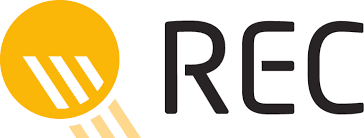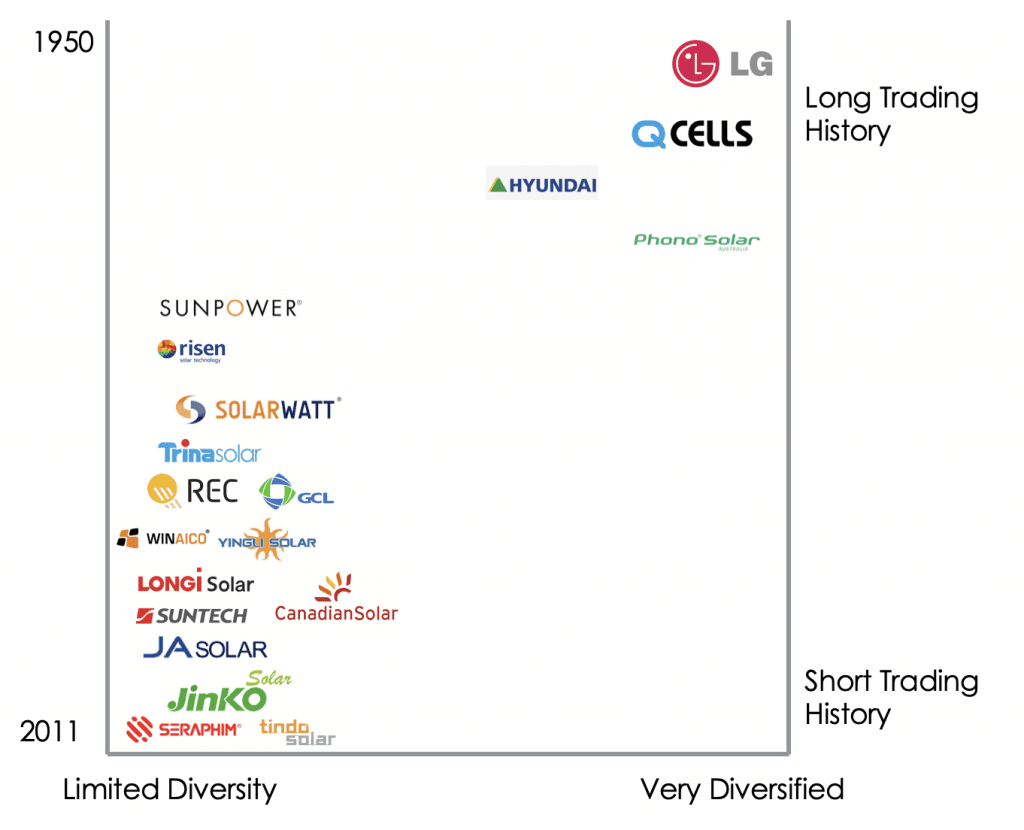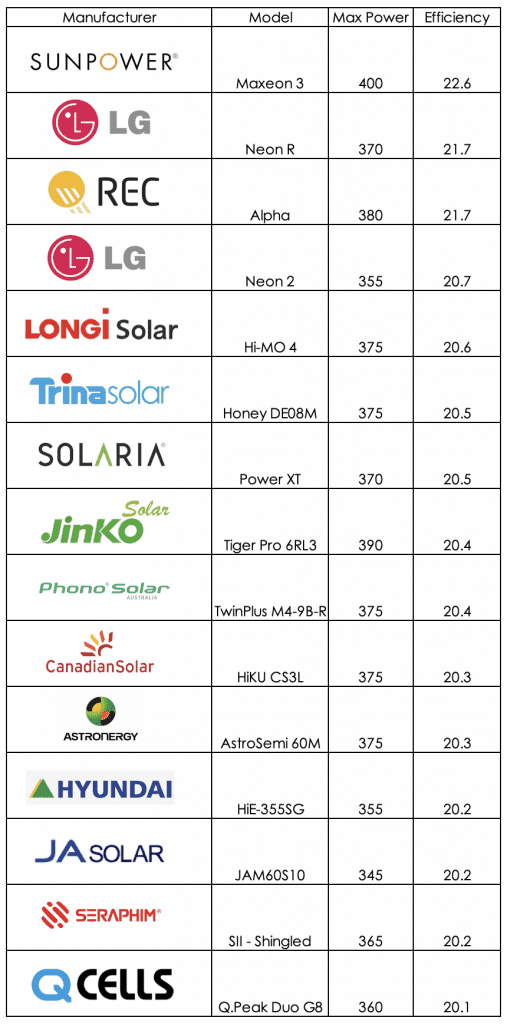Are REC Solar panels any good?
At GI Energy we can install any solar panel for your home or business. This means we are able to write honest reviews expressing our genuine opinion, without having to be biased due to holding stock of REC solar panels, or any other solar panel! This article details the opinion of our Business Development Director, who has worked in various roles from consultancy, business development and commercial project management in the PV industry since 2009.
Warranty and tech support today: 8.5
Warranty and tech support long-term: 7.5
Performance: 9
Price: 7
Value for money: 8.5
Total Rating: 8.1/10
REC Solar panels review
Today we are talking about REC Solar. REC stands for Renewable Energy Corporation – a very sensible and corporate sounding name indeed. Usually this is where I say things like “these panels are made in China” or “introducing another monster Chinese manufacturer”. So, it’s refreshing to start this review by announcing that REC solar panels are (for now at least) still made in Singapore – a rarity in this industry. Originally founded in Norway in 1996, REC are still a fairly modestly sized solar manufacturer for global volume, certainly when compared to the “big ten” listed below.
- Jinko Solar – 14.2GW
- JA Solar – 10.3GW
- Trina Solar – 9.7GW
- Longi Solar – 9.0GW
- Canadian Solar – 8.5GW
- Hanwha Q Cells – 7.3GW
- Risen Energy – 7.0GW
- First Solar – 5.5GW
- GCL – 4.8GW
- Shunfeng Photovoltaic – 4.0GW
To put in in perspective, REC announced in 2019 they had cumulatively shipped over 10GW since their inception in 1996. That means that JA Solar and Jinko both ship more annually than REC ever have in their lifetime. But, it is not all about who can make more panels. Once they are installed on your roof, are you really going to care if the panels on your neighbours roof come from a manufacturer who can make more? Or are you going to care more about the actual performance, reliability and level of support available? There are pros and cons of all major solar panel brands to consider.
With that in mind, a good way to analyse how much a solar panel is suited to your needs is to look at the following criteria:
- Who is the manufacturer and are they going to be able to help with long-term warranty support?
- How will the solar panel actually perform when its installed on my roof?
- How much will it cost me?
The best solar panel for you, may not be the best solar panel for your best friend or neighbour, as everyones budget and needs are different.
So, let’s take a closer look at the manufacturer.
As we have already mentioned, REC were founded in Norway in 1996. This puts them in the middle of the road among the major players in terms of trading history. In terms of volume, they sit comfortable outside the top ten manufacturers globally, but they are growing fairly quickly in recent years. This is partly due to being purchased by massive chemical company China National Bluestar Group. The acquisition would have injected cash and ambition into the manufacturer, who are gaining ground in terms of number of panels shipped each year.
As we also know REC still manufacture, and have their head office in Singapore. This is a big selling point and justifiably so. With respect to the Chinese manufacturers, some of which make wonderful solar panels, the “Made In Singapore” brand carries a lot of weight, and is synonymous with quality. They are also a vertically integrated manufacturer, which means they control everything in the supply chain through to completion of the product. This is different to lots of other solar manufacturers, who will source wafers, ingots or cells from multiple places and assemble everything in their own factories. Why is this good? It means REC have complete jurisdiction over their quality control from start to finish.

All very good stuff so far. The only slight downside here is the lack of diversity in the company. Until REC were purchased by China National Bluestar Group, they have been a “panel only” manufacturer – and a mid sized one. This is a negative because over the next decade not all major solar panel manufacturers will survive. The massive amount of global demand for solar panels will ultimately start to decline, and there won’t be enough business for everyone to keep trading. Backing a manufacturer that has lots of revenue streams and divisions, is a safer bet than backing one who only makes solar panels. It must be said here that China National Bluestar Group are more diversified and might offer the diversification that brings additional credibility, but it is quite early in this relationship, and we do not know where liabilities will fall under the new structure. I also feel like it is inevitable that when a massive Chinese company buys something like REC, it is only a matter of time before they start moving things to a more cost-effective facility in China. This doesn’t necessary mean things will decline in quality, but it would be a shame for the brand to lose the Singapore facilities.
So, how are they actually going to perform?
REC may not make the most solar panels, but they make some very, very good ones! They also claim to have to lowest failure rate in the industry (least amount of warranties claimed) but I can’t find any real data supporting this anywhere. It is a pretty difficult thing to justify but based on our personal experience, and the feedback from the industry in general, they do make a very reliable product.
As with all manufactures, they offer a range of panels, some that are more expensive and more efficient, and some that are more cost effective. The Twin-Peak and N-Peak are more affordable and cost effective options, which still offer decent quality. The champion of the brand is the REC Alpha panel, which comes in with an efficiency rating of 21.7%. This is hugely impressive and makes them the joint second most efficient solar panel in the world in 2019. As with most modern solar panels they are a split cell panel, which means reduced current and better efficiency with shade. They also have multi-busbar cells with 16 micro wires which help increase efficiency. The structure of the Alpha panel is also quite unique in that is has two extra bars across the middle of the frame, which means a design for up to 7000Pa front load. Industry standard is 5000Pa.

They also offer great warranties, with the Alpha series offering a standard 20-year product warranty, which is automatically extended to 25-years if installed by a REC Solar Professional, which GI Energy are!
Lots of boxes ticked there then, so how about cost?
The REC panel you really want is the Alpha, and you will need to be prepared to pay top dollar for it. It is one of the most expensive solar panels on the market, which is justified by the fact it is also one of the most efficient. The Twin Peak and N-Peak panels are still a good quality panel, but noticeably a step down in overall performance.
You are getting pretty close to LG pricing for the Alpha panel which is why we they overall score we have given them is not slightly higher.
Depending on what your needs and budget is like, there are other panels that are quite a bit cheaper than are almost as good as the REC Alpha. So, if budget is really important for you then they may not be for you. However, if you are shopping in the top end of the market then they are certainly a key contender!
Here are some links worth checking out:










